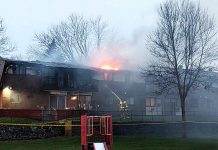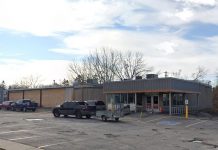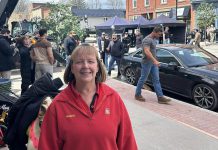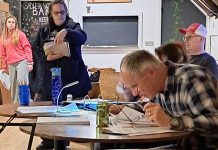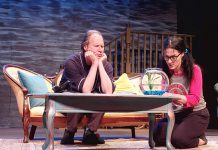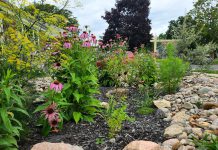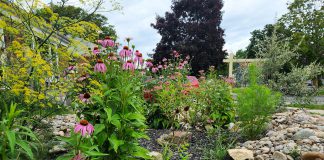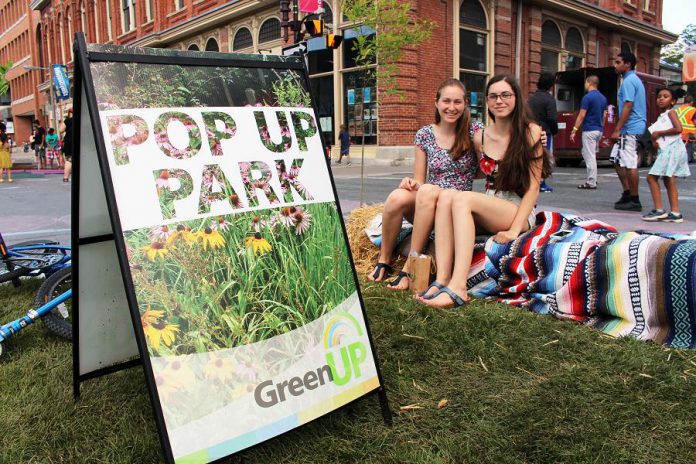
Have you ever thought about how street space that is generally reserved for cars, trucks, and buses, could adapt and morph into another kind of space that would add more vibrancy to our community?
It’s a great time of year to get outside with ease and in the comfort of warm sunny days to reconnect with friends and neighbours. It’s also a great time to reflect on public space in our neighbourhoods — like streets — to observe how space is used and how it could be improved to make our lives easier and healthier.
Peterborough is bursting with great ideas, and residents here are sharing and celebrating their ideas for community building in all sorts of different ways!
For example, on the first weekend in May, groups of neighbours gathered throughout the world, including in Peterborough, as part of an international festival of free, citizen-led walking conversations, called Jane’s Walks.
Inspired by Jane Jacobs, Jane’s Walks in our community explored various areas of our city, and provided a platform for residents to share stories, local history, and personal observations.

One group met up for a Jane’s Walk in the Jackson Park-Brookdale community to share ideas about how streets and crossings in that neighbourhood could be made safer, and to discuss the kinds of impacts this would have on neighbours’ health and the social fabric of the neighbourhood.
During this walk, Gina Varrin, Jane’s Walk Festival Lead for Peterborough, shared Jane Jacobs’ “Ten Big Ideas”. Varrin highlighted two of the ideas that she thought were especially appropriate to this neighbourhood walk:
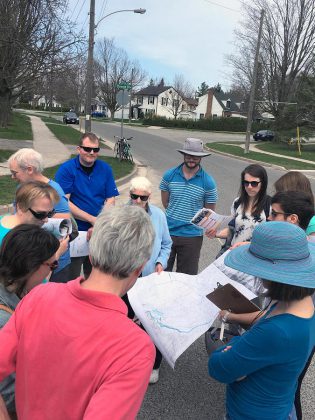
- The diversity of a good neighbourhood can only be achieved when we allow many different people to pursue their own little plans, individually and collectively.
- The people best equipped to understand urban complexity are, ordinary, interested citizens; without the assumptions that often come with professional training, everyday users of the city can learn more freely from what they see and experience firsthand.
One resident on the walk shared that they had moved into the neighbourhood before the Brookdale Plaza was built, when Brookdale Creek ran freely and naturally through a wooded area that is now the location of the plaza.
“Imagine that there used to be a natural play area at the foot of my street!” exclaims Carolyn Code, who moved onto nearby Chesterfield Avenue five years ago and brought her 4-year-old daughter on the walk.
Another resident, Jordan Hamilton, is passionate about making the streets in his neighbourhood safer.
“I’d like my daughters to be able to bike safely to Dominion Park,” he explains. “We’ve only gone to the park a handful of times — the lack of safe street crossings causes too much of a barrier to make it a pleasant outing with the family.”
Neighbours in this area are craving a deeper connection to their community, which could come in the form of the inclusion of small-scale infrastructure improvements that would help create a safer environment for all road users, and a safer pathway to community gathering spaces like the park.
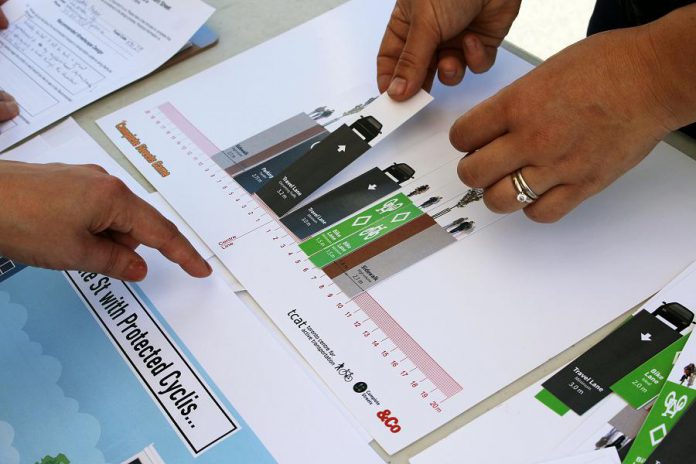
This has also become apparent through connections with residents in the area through GreenUP’s NeighbourPLAN program.
We have also learned from events like Peterborough Pulse, an open street event, that people love to transform street space for walking, cycling, and engaging in activities. Streets can become spaces where people have fun with their families and meet new people, forming bonds through a wonderful, shared experience.
Smaller-scale events like Pulse Pop-Ups take the idea of open streets to the neighbourhood level, inviting neighbours to turn their residential streets into spaces for playing and gathering. The street becomes a space where people gather for music, food, arts, and play.
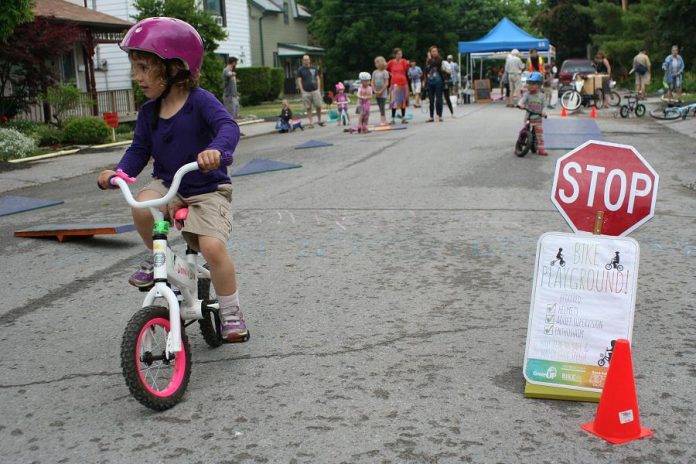
The Jackson Park-Brookdale neighbourhood will be hosting their own Pulse Pop-Up street festival at the end of June. A local street will be closed to vehicle traffic and instead there will be citizen led workshops, bike play, crafts, music, food, and more!
Want to have a Pulse Pop-Up on your street? Talk to some of your neighbours and get in touch with GreenUP! We currently have funding to support two more neighbourhoods to create resident-driven, pop-up street events.
Want to learn more about NeighbourPLAN and the work we are doing in three Peterborough neighbourhoods? Check out the NeighbourPLAN online neighbourhood maps and share your thoughts about public space.
For more information about NeighbourPLAN, contact Laura Keresztesi at laura.keresztesi@greenup.on.ca. For more information about PULSE Pop-Ups, contact Hillary Flood at hillary.flood@greenup.on.ca and you can also visit greenup.on.ca. These projects are generously supported by the Ontario Trillium Foundation and local community partners.


